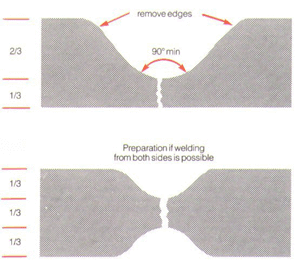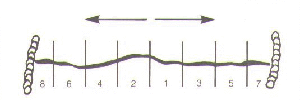Welding Cast Iron has quite a few potential pitfalls, but if done correctly, it’s not difficult.
Why is Welding Cast Iron problematic
The key reason why welding cast iron can be problematic is the high carbon content. During the welding process, this carbon migrates into the weld metal and/or the heat affected zone adjacent to the weld metal, causing elevated hardness/brittleness. This is how Cast Iron gets its reputation for post weld cracking.Process for Welding Cast Iron
Gas Welding heats the Cast Iron slower than Arc based processes and the flame is lower temperature than an arc. This means Carbon migration is not normally a problem. Use of a proprietary Cast iron Gas Welding rod is important. The only real downsides to Gas Welding Cast Iron is the amount of heat needed if components are large. Gas Welding is also a slow process.Arc/Stick Welding is, arguably, the best all-round process for Welding Cast Iron, provided the correct welding rods are used. Cast iron Welding Rods have a special Graphite rich flux, this graphite chemically ties up the Carbon in the Cast Iron, limiting migration into the weld metal and heat affected zone. There are two common types of Cast iron Welding Rod, Ferro-Nickel and Pure Nickel. Ferro-Nickel are typically 53% Steel and 47% Nickel. Ferro-Nickel Rods are cheaper than pure Nickel and are ideal for welding Cast Iron to Steel. Pure Nickel will produce a softer, more malleable weld deposit. I would advocate using Ferro-Nickel, unless the job specifically requires Pure Nickel.
Mig Welding is, in my opinion, not a great way to weld Cast Iron. Whilst there are specialist Flux Cored Wires available, unless you have a repeating application that you can create a procedure for, I would not advocate Mig Welding Cast iron.
Tig Welding is not considered a suitable process for Welding Cast Iron. An open arc process such as Tig offers no opportunity to mitigate Carbon migration.
Welding Techniques
Gas Welding – There are no specific techniques that need to be deployed.Arc/Stick Welding – All of the following are important:
Prep the job with a ‘U’ shaped groove, avoid sharp corners as this can lead to heat build up which will exacerbate carbon migration.

Use the correct type of welding rod.
Ensure the component is AT LEAST at room temperature, adding a small amount of pre-heat will help, but you only need the component to be warm to the touch.
Limit the amount of welding done in one run. As a rule of thumb, do not put down a continuous run that has a length greater than 10x the diameter of the welding rod being used. Having said that, it’s ok to put down multiple runs in different parts of the component (see graphic in next item). Eg, if repairing a 300mm crack with a 3.2mm rod, you can weld a run of 32mm, then do another 32mm run in another part of the crack. Avoid letting the weld area get too hot, this is the purpose of short runs.
If you’re repairing crack, run a bead across each end of the crack to avoid the crack spreading further.

Keep the welding rod vertical, not at an angle, like you would for most stick welding.
Don’t expect to weld cast iron quickly, the key is to take you time and do it properly.
I hope you found this blog article about Welding Cast Iron useful, if things work out well for you, please feel free to post some pictures of your achievements on our Facebook Page or tweet us @ScionSupply
Please let me know what you thought of this article by leaving a comment. Don’t worry, your email address won’t be added to a database or shared and you won’t receive any unsolicited email.
If you need cast iron electrodes, both main types are available on our website
Ensure the component is AT LEAST at room temperature, adding a small amount of pre-heat will help, but you only need the component to be warm to the touch.
Limit the amount of welding done in one run. As a rule of thumb, do not put down a continuous run that has a length greater than 10x the diameter of the welding rod being used. Having said that, it’s ok to put down multiple runs in different parts of the component (see graphic in next item). Eg, if repairing a 300mm crack with a 3.2mm rod, you can weld a run of 32mm, then do another 32mm run in another part of the crack. Avoid letting the weld area get too hot, this is the purpose of short runs.
If you’re repairing crack, run a bead across each end of the crack to avoid the crack spreading further.

Keep the welding rod vertical, not at an angle, like you would for most stick welding.
Don’t expect to weld cast iron quickly, the key is to take you time and do it properly.
I hope you found this blog article about Welding Cast Iron useful, if things work out well for you, please feel free to post some pictures of your achievements on our Facebook Page or tweet us @ScionSupply
Please let me know what you thought of this article by leaving a comment. Don’t worry, your email address won’t be added to a database or shared and you won’t receive any unsolicited email.
If you need cast iron electrodes, both main types are available on our website


No comments:
Post a Comment